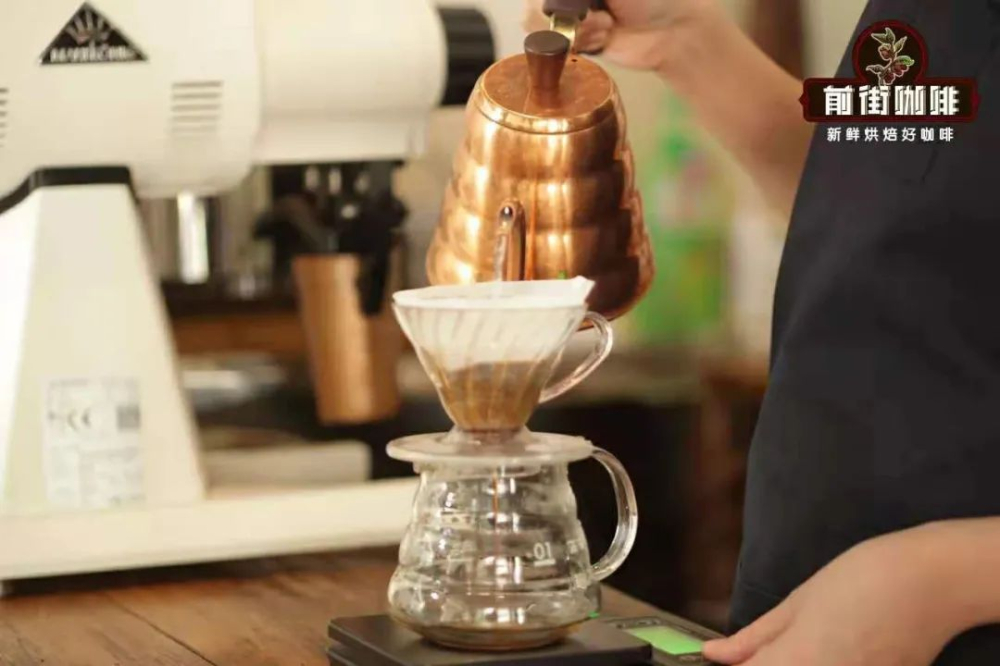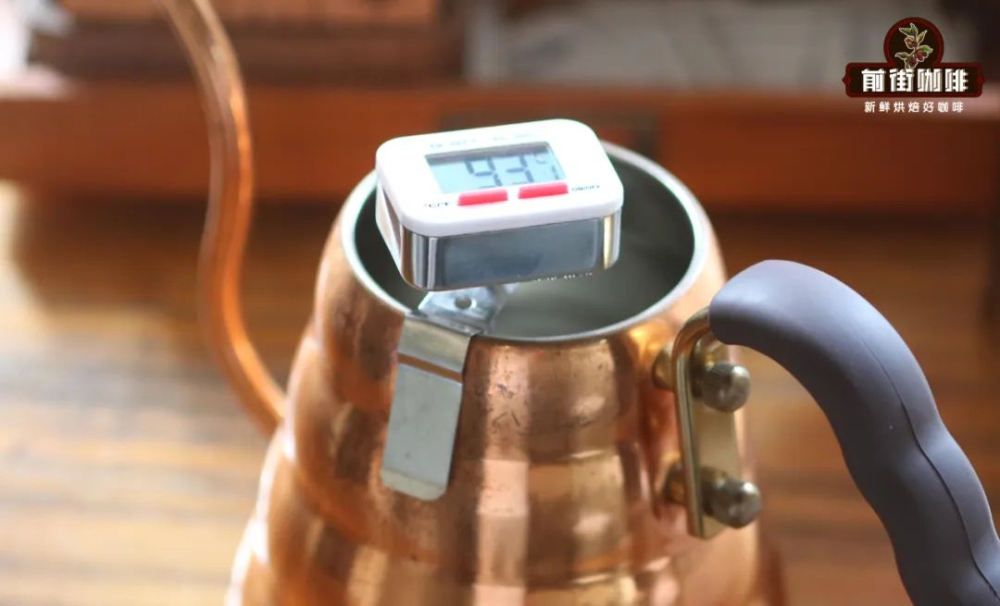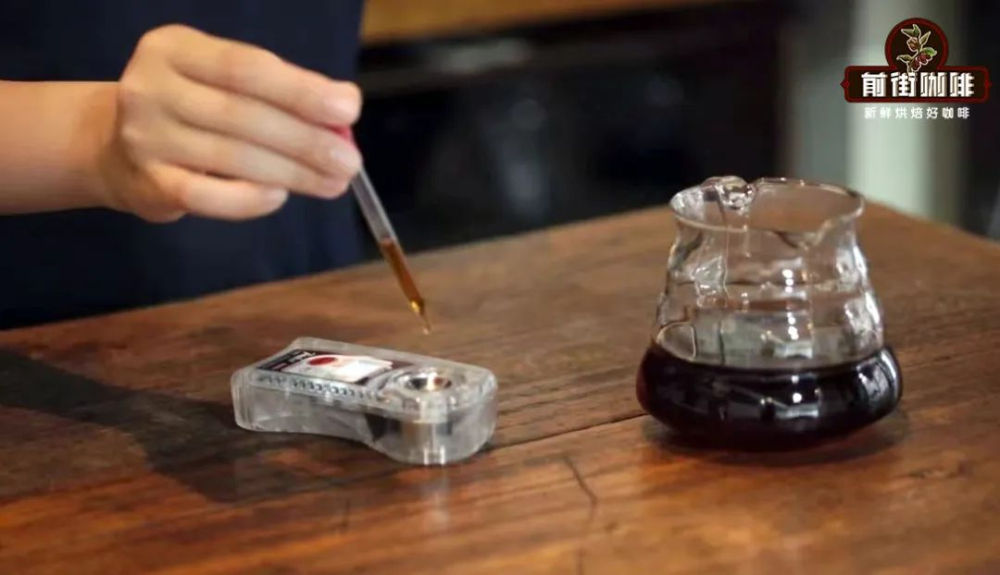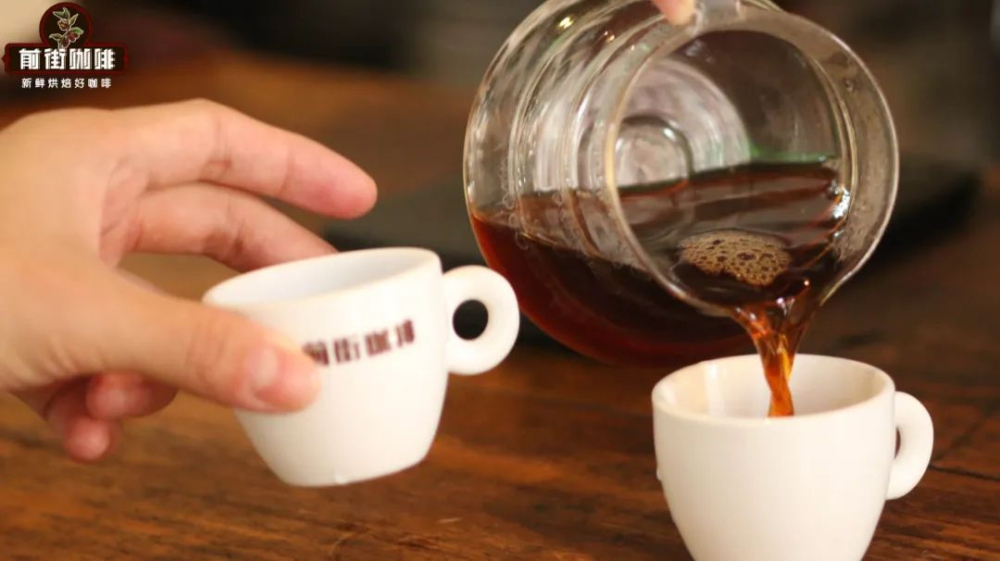The water temperature parameters of hand-brewed coffee recommend that the correct water temperature of brewing coffee is the right degree.
Friends who have brewed coffee should know that the temperature of the water will affect the flavor of the final coffee. It is also clear that if the water temperature is high, the coffee will be more full-bodied; if the water temperature is low, the coffee will be more insipid.

However, will there be a big difference between the coffee brewed by two or three degrees in water temperature? For example, the water temperature for shallow roasted coffee recommended in Qianjie is 90-93 ℃. Does it mean that all the temperatures in this range can be used to flush light-roasted coffee beans? Then it's not too late. Come and try it out right away. The front street of this demonstration uses Panamanian butterfly coffee beans, which is a coffee with 70% Panamanian rosy summer, so it has the fruit flavor of rosy summer, which is very classic. The main comparison this time is how different the coffee is when the water temperature is different. The water temperature chooses the minimum and maximum recommended water temperature, which are 90 ℃ and 93 ℃ respectively.

Other parameters of brewing adopt the standard parameters of Qianjie: powder quantity: 15g ratio: 1: 16 water temperature: 90 ℃ / 93 ℃ grindness: No. 20 sieve pass rate 80% filter cup: V60 filter cup manipulation: three-stage sampling measured the concentration of two cups of coffee, the concentration of coffee washed out with 90 ℃ water temperature was 1.32%, and the concentration of coffee washed with 93 ℃ was 1.40%. According to the data, the extraction rate was increased by 1.2% with a water temperature 3 ℃ higher than 90 ℃.

After reading the data, let's taste and compare the flavor characteristics of the two groups. The first is the 90 ℃ group, the aroma is the sweetness of fruit, but relatively weak. Taste is citrus fruit tone, soft acidity. With a hint of sweet honey and a sense of tea. The coffee brewed at this temperature can show the basic flavor of this coffee bean, and it is moderate in concentration and comfortable to drink. Then came to the 93 ℃ group, first of all, the aroma is more obvious and richer than the previous group, is the aroma of fruit and ginger flowers. Through tasting, we can clearly detect that the sweetness is higher than that of the previous group, which is also the basic tonality of citrus, but the sweetness of ginger sugar is very prominent. And the sense of hierarchy is better than the 90 ℃ group. However, there is also a slight flaw, there is a slight almond-like nutty taste and astringency after the coffee temperature drops.

From the point of view of taste, there is only a difference of 3 ℃ between the maximum and minimum recommended brewing water temperature, and the taste of the coffee has a relatively obvious change. In the recommended water temperature range, the coffee made from the lower water temperature is softer and more comfortable. The choice of higher water temperature can flush out more rich aroma and flavor, but high water temperature is also prone to the risk of astringent mixed smell. Therefore, Qianjie will choose the water temperature of 91 ℃ when cooking most of the medium and shallow roasted coffee beans, which can greatly reduce the occurrence of many accidents and improve the stability of the products. But there are also some coffee beans that are suitable for higher water temperatures, such as Uraga in Ethiopia and coffee beans in Kenya, which can show the richer flavor and solid acidity of coffee. There is now a better understanding of the choice of water temperature. For example, the popular cooling method, that is, in the whole process of brewing coffee, the middle and front segments of the coffee are extracted at a relatively high temperature (≥ 93 ℃) to extract rich aroma and flavor substances. In the later stage, a lower temperature (≤ 88 ℃) was used to regulate the concentration of coffee and reduce the release of bitter substances in the second half.
Important Notice :
前街咖啡 FrontStreet Coffee has moved to new addredd:
FrontStreet Coffee Address: 315,Donghua East Road,GuangZhou
Tel:020 38364473
- Prev

Three-stage water injection technique algorithm for hand-brewed coffee brewing coffee is a method to judge the time of water cut-off.
Before a friend came to Qianjie, "Qianjie Qianjie, the last section of the three-stage water injection should wait for the water to run dry, or should it be injected in the middle of the water?" Why do I see someone say it's better to wait for the water to run dry before filling it? " This friend asked this question in front of the street because when he was teaching people to make coffee in front of the street.
- Next

Introduction to the method of time parameters of steaming water quantity of hand-brewed coffee
A few days ago, when sharing the problem of coffee exhaust, the street also roughly said that "carbon dioxide in coffee beans is to" inhibit "the release of volatile flavor substances from coffee", so there will be a "steaming" step when brewing. That is, by injecting a small amount of water to wet the coffee powder, let the coffee powder exhaust gas quickly, here.
Related
- Beginners will see the "Coffee pull flower" guide!
- What is the difference between ice blog purified milk and ordinary milk coffee?
- Why is the Philippines the largest producer of crops in Liberia?
- For coffee extraction, should the fine powder be retained?
- How does extracted espresso fill pressed powder? How much strength does it take to press the powder?
- How to make jasmine cold extract coffee? Is the jasmine + latte good?
- Will this little toy really make the coffee taste better? How does Lily Drip affect coffee extraction?
- Will the action of slapping the filter cup also affect coffee extraction?
- What's the difference between powder-to-water ratio and powder-to-liquid ratio?
- What is the Ethiopian local species? What does it have to do with Heirloom native species?

